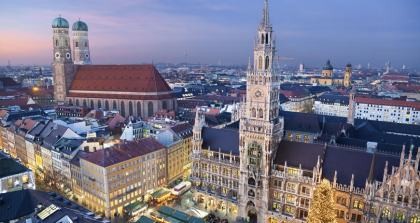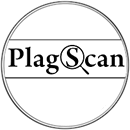Essay in Englisch : A Local or Regional pollution problem
Air Pollution
A Local or Regional pollution problem (Germany): Germany’s high population density, industrialization level, location in central Europe and dependence on fossil fuels for its energy supply have contributed to making environmental protection a public concern and a policy importance.
The decoupling of economic growth from the flow of numerous major pollutants over the past two decades is indicative of Germany’s remarkable achievement in reconciling economic growth and environmental objectives. Air pollutants are major problems among all pollutions in Germany. Air pollutants are usually classified into suspended particulate matter (dusts, fumes, mists, and smokes) gaseous pollutants (gases and vapors) and odors.
Suspended particulate matter can be considered according to total deferred particles: the finer fraction, which can reach the alveoli, and the most dangerous. Much of the secondary pollutants consist of created by the concentration of gaseous pollutants, for example, sulfur dioxide and nitrogen dioxide. Types of suspended particulate matter include diesel exhaust particles, coal fly ash, wood smoke, mineral dusts, such as coal, asbestos, limestone, and cement, metal dusts and fumes, acid and pesticide mists.
Environment effects:
Air pollution is a difficult problem. Different pollutants interact in the air, affecting our health, location and climate. Air pollutants are released from almost all economic and public activities. Across Germany as a whole, releases of many air pollutants have decreased in recent decades, and much progress has been made in beginning air pollutants such as sulphur dioxide, carbon monoxide and benzene. However, air pollutant concentrations are still too high and damage our health and the ecosystems we depend on. An important proportion of Germany’s population lives in areas especially cities where air quality standards do not occur. Particulate matter and ozone pollution are particularly associated with serious health risks. Air pollutants released in one European country may contribute to or result in poor air quality elsewhere. Moreover, important contributions from intercontinental transport influence Particulate matter concentrations in Germany. Addressing air pollution needs local actions to improve air quality, greater international cooperation, and a focus on the links between climate rules and air pollution rules.
Sources of Outdoor Air Pollution:
Outdoor air pollution is caused mainly by the combustion of petroleum products or coal by motor vehicles, industry, and power stations. In Germany, the combustion of wood or agricultural waste is another major source. Pollution can also originate from industrial processes that involve dust formation. Indoor sources also contribute to outdoor air pollution, and in heavily occupied areas, the contribution from indoor sources can make extremely high levels of open-air air pollution.
2
Motor vehicles produce particulate matter, nitric oxide and, carbon monoxide, organic compounds, and lead. Lead is a gasoline additive that has been phased out in industrial countries, but some developing countries still use leaded gasoline. Authorizing the use of lead-free gasoline is an important intervention in relation to health. It eliminates vehicle-related lead pollution and permits the use of catalytic converters, which reduce emissions of other pollutants. Develop a system of control strategy:
A control strategy is a set of separate and specific actions identified and implemented to achieve reductions in air pollution of Germany. These activities may vary by source type, such as stationary or mobile, as well as by the pollutant that is being targeted. The purpose of these measures is to achieve the air quality standard. Costs and benefits are evaluated in the development of the control strategy. Preventive measures:
Multi-stage Flue Gas Conditioning Systems:
In that case German Local Government can take initiative like flue gas cleaning through the intelligent combination of designated processes and technologies. It can successfully meet even the most severe demands of German People, such as high raw gas concentrations, minimum clean gas concentrations, or even zero emissions. Flue Gas Conditioning is important, in some cases required, where services have swapped to burning low sulfur coal to meet required sulfur dioxide releases. The burning of low sulfur coal decreases the efficiency of the associated electrostatic precipitators which collect the ash from coal fired stations. The addition of Flue Gas Conditioning retains the original performance and in poorest cases delivers significant efficiency improvement. Wet flue gas cleaning systems:
It is another option that offers limestone flue gas desulphurization scrubbers with high reliability and availability. Flue gas cleaning systems have enhanced this basic technology to a most modern leaning technology. Dry flue gas cleaning systems:
Dry flue gas cleaning systems for coal-fired boilers are well proven one-step cleaning keys with very compact designs. It also builds different lime or sodium bicarbonate dry absorption and adsorption reactors for the adsorptive cleaning process. Impression of system of control strategy:
Control strategy expansion is the process of measuring specific reduction measures, management practices, or control technologies to control the best combination of approaches to provide the emission reductions necessary to achieve the air quality standard or goal. Three primary considerations in designing an effective control strategy are:
3
(1) Environmental: Factors such as equipment locations, ambient air quality conditions, adequate utilities, legal requirements, noise levels, and the contribution of the control system as a pollutant. (2) Engineering: Factors such as contaminant characteristics, gas stream characteristics, and performance characteristics of the control system.
(3) Economic: Factors such as capital cost, operating costs, equipment maintenance, and the lifetime of the equipment. Air pollution officials should also consider pollution prevention which includes eliminating as much of the pollution emissions as possible at the source, substituting raw materials, considering alternative manufacturing processes, and improving process control measures.
Controls on major stationary, mobile, and area sources are part of a successful control strategy. These controls should utilize reasonably available control technology. Examples include controls on volatile organic compounds from solvent and paint usage as well as controls on nitrogen oxide emissions from combustion units. For mobile sources, examples include tighter emission controls for vehicles and low-sulfur fuel standards. For major stationary sources, it is beneficial to issue permits including emission limitations for any major sources, new and existing. The basic types of emission control technology are mechanical collectors, wet scrubbers, bag houses, electrostatic precipitators, combustion systems, condensers, absorbers, absorbers, and biological degradation. The selection procedure should be based on the environmental, engineering, and economic considerations described above.






 German
German
 English | Writeree.com
English | Writeree.com


